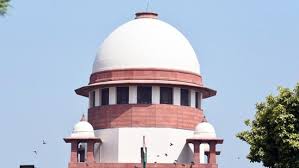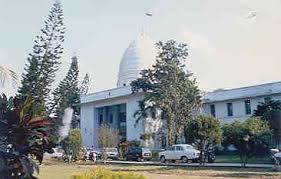(A) Constitution of India, Article 32 – Environmental and ecological governance – Conception, constitution, functions, and finally the institutionalisation of the CEC – Held that by virtue of the Notification dated 05.09.2023, Courts’ concerns regarding the functioning of the CEC as an ad hoc body and that hereinafter it should be institutionalised as a permanent body have been taken care of – The said Notification provides for the constitution of the CEC, its powers, functions, mandate, members, method of appointment, terms of service, and monitoring of its functioning – Further directed the CEC to adopt the following measures to promote institutional transparency, efficiency, and accountability in its functioning:
i. The CEC shall formulate guidelines for the conduct of its functions and internal meetings. The CEC shall formulate the operating procedures delineating the roles of its members and the Secretary of the CEC.
ii. The CEC shall formulate guidelines about the public meetings that it holds, ensure the publication of meeting agenda in advance on its website, maintain minutes of meetings, and set out rules regarding notice to parties.
iii. The CEC shall formulate guidelines for site visits and, if necessary, hearing the public and affected parties therein.
iv. The CEC shall formulate guidelines fixing time limits for site visits, preparation of reports, and also the manner of preparation of reports.
v. We further direct that these guidelines/regulations must be accessible for anyone to seek. They shall be posted on the official website of the CEC. (Para 20 and 21)
(B) Constitution of India, Article 32 – Environmental and ecological governance – Environmental rule of law – Held that in our environmental governance, have attempted to formulate some new principles for the effective monitoring of various bodies, institutions, and regulators established for protecting our forests, wildlife, environment, and ecology –Directed that in furtherance of the principles of environmental rule of law, the bodies, authorities, regulators, and executive offices entrusted with environmental duties must function with the following institutional features:
i. The composition, qualifications, tenure, method of appointment and removal of the members of these authorities must be clearly laid down. Further, the appointments must be regularly made to ensure continuity and these bodies must be staffed with persons who have the requisite knowledge, technical expertise, and specialisation to ensure their efficient functioning.
ii. The authorities and bodies must receive adequate funding and their finances must be certain and clear.
iii. The mandate and role of each authority and body must be clearly demarcated so as to avoid overlap and duplication of work and the method for constructive coordination between institutions must be prescribed.
iv. The authorities and bodies must notify and make available the rules, regulations, and other guidelines and make them accessible by providing them on the website, including in regional languages, to the extent possible. If the authority or body does not have the power to frame rules or regulations, it may issue comprehensive guidelines in a standardised form and notify them rather than office memoranda.
v. These bodies must clearly lay down the applicable rules and regulations in detail and the procedure for application, consideration, and grant of permissions, consent, and approvals.
vi. The authorities and bodies must notify norms for public hearing, the process of decision making, prescription of right to appeal, and timelines.
vii. These bodies must prescribe the method of accountability by clearly indicating the allocation of duties and responsibilities of their officers.
viii. There must be regular and systematic audit of the functioning of these authorities. (Para 31)
SUPREME COURT OF INDIA
2024 STPL(Web) 75 SC
[2024 INSC 78]
In Re: T.N. Godavarman Thirumulpad Vs. Union Of India And Ors.
Writ Petition (Civil) No. 202 of 1995-Decided on 31-1-2024
https://stpllaw.in/wp-content/uploads/2024/04/2024-STPLWeb-75-SC.pdf







